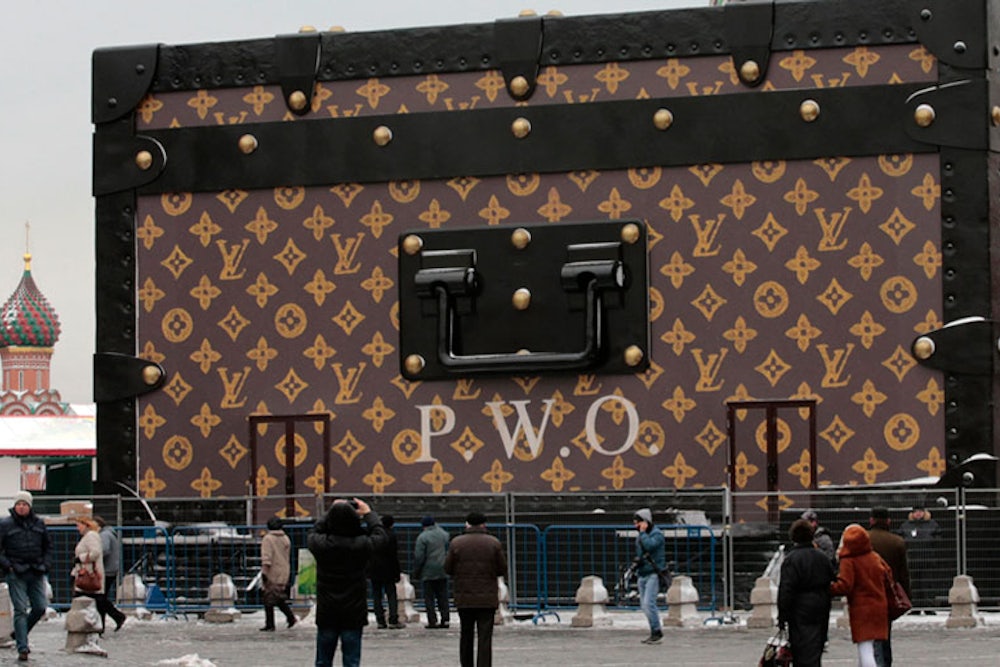Establishing shots from every cold war scene ever filmed here made Moscow the epicenter of a massive and massively bankrupt Empire of Evil, in ideological opposition to democracy and freedom. Freedom, it turns out, to dump an enormous Louis Vuitton trunk in the middle of Red Square. Lenin must be spinning in his nearby mausoleum, unless that has been turned into a Gucci or Cartier franchise, too. In which case, he might have been reinstalled in the Vuitton pavilion—might even be for sale.
It was felt by many that the proximity of a gift shop and visitor center to Stonehenge in Britain undermined the psychic power of an ancient site. But at least they didn’t plonk the shop right in the middle of the circle of stones. The opposite of the Stalinist practice of discreetly airbrushing undesirables such as Trotsky out of photographs and thereby out of the historical record, this epic exercise in product placement does not just turn Red Square into a market square;it converts the history of class struggle into the triumph of retail—and blocks out any view to the contrary.
LOCATION: Moscow, Russia DATE: November 27, 2013 PHOTOGRAPHER: Tatyana Makeyeva
But what a curious and paradoxical triumph it turns out to be. Strolling past the great retail cathedrals of Manhattan or Dubai, one is reminded of Diogenes in the marketplace: “How many things there are in the world of which Diogenes has no need!” Brands such as Louis Vuitton have established themselves as synonymous with everything that the modern Diogenes can go through life neither owning nor wanting. To the young and militant, Louis Vuitton might seem an incitement to a neo-Bolshevik revolution and the establishment of a police state (represented by the photographer discreetly spying on us from the bottom left-hand corner as if auditioning for work with the KGB), but the rest of us are likely to have a more modest reaction. This photograph makes us understand that there is actually something surprisingly public-spirited about brands like Louis Vuitton. They have put a great deal of time and effort into the design and manufacture of things whose purpose is, precisely, to make us feel OK about not having them: an unexpected advance on what Marx called “freedom from the realm of necessity.” We don’t even have to renounce worldly belongings as some religions or cults demand—we just get along quite nicely without them, thank you.
Perhaps deliberately, the big case is reminiscent of the black Kaaba at Mecca—minus the surrounding crowds. The similarity suggests that the ostensible impulse behind this pavilion might have been to inspire every faithful consumer, at least once in a lifetime, to make a pilgrimage to a flagship store and spend a certain amount of dough. But, as we can see, no one’s that interested. (Note the barricades put up to keep the nonexistent hordes at bay.) So what we have here is documentary proof of a truly viable twenty-first-century religion: a belief system in which no one believes.
